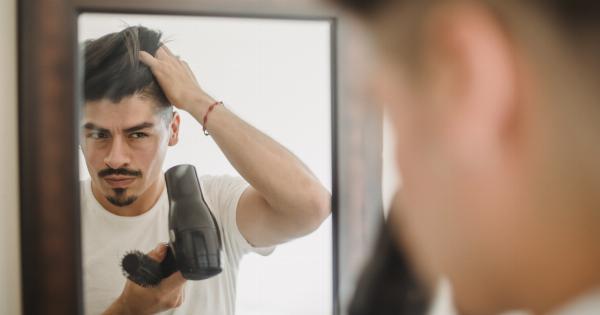Long, luxurious locks are a beauty staple that many women strive to achieve. Unfortunately, not everyone is blessed with thick, full hair. That’s where hair extensions come in.
Hair extensions have become increasingly popular over the years for achieving the long, luscious locks that so many desire. However, the truth is that hair extensions can have a dark side. They can cause a variety of scalp issues that can lead to discomfort, pain, and even hair loss.
What Are Hair Extensions?
Hair extensions are artificial hairpieces that are added to natural hair to increase its length, thickness, or volume. They come in a variety of styles, colors, and types, including synthetic and human hair extensions.
Some extensions clip on, while others are sewn or glued onto the natural hair.
Common Types of Hair Extensions
There are several types of hair extensions available, including:.
- Clip-in extensions
- Tape-in extensions
- Sew-in extensions
- Micro bead extensions
- Fusion extensions
How Hair Extensions Can Affect the Scalp
While hair extensions can add length and thickness to hair, they can also cause a variety of scalp issues. These issues include:.
- Pressure or tension on the scalp from the weight of the extensions
- Itching and irritation from the attachment method
- Dry, flaky scalp
- Hair breakage and damage near the scalp
- Thinning hair or hair loss
- Bacterial and fungal infections from inadequate cleaning or poor quality extensions
The Risks of Hair Extensions
The risks associated with hair extensions vary depending on the type of extensions and the way they’re applied. Clip-in extensions are generally considered low-risk since they’re easy to remove and don’t cause permanent damage.
However, the following types of extensions are riskier:.
Tape-In Extensions
Tape-in extensions are thin wefts of hair that are attached to natural hair with adhesive tape. These extensions are relatively easy to apply, but they can cause damage and hair loss if not removed properly or if left in for too long.
Sew-In Extensions
Sew-in extensions involve braiding natural hair and then sewing the extensions onto the braids. This method puts a lot of tension on the hair and scalp, which can cause thinning and hair loss over time.
Micro Bead Extensions
Micro bead extensions involve attaching small beads to the natural hair and then threading the extensions through the beads. This method can cause damage and breakage, especially if the extensions are too heavy for the natural hair to support.
Fusion Extensions
Fusion extensions involve attaching small sections of hair to natural hair using a bonding glue. This method can be the most damaging to hair and can cause severe breakage and hair loss if not done correctly.
How to Reduce the Risk of Scalp Damage from Hair Extensions
If you’re considering hair extensions, there are ways to reduce the risk of scalp damage. These include:.
- Choosing a reputable salon with experience in hair extensions
- Opting for high-quality, human hair extensions that are lightweight
- Limiting the amount of time the extensions are left in
- Cleaning the scalp and extensions regularly with a mild shampoo and conditioner
- Avoiding tight hairstyles that put tension on the scalp and hair
The Bottom Line
Hair extensions can be a great way to achieve the long, luscious locks that so many desire. However, they come with risks that should be carefully considered before making a decision.
If you’re considering hair extensions, it’s important to do your research, choose a reputable salon, and take steps to minimize the risk of scalp damage and hair loss.


























